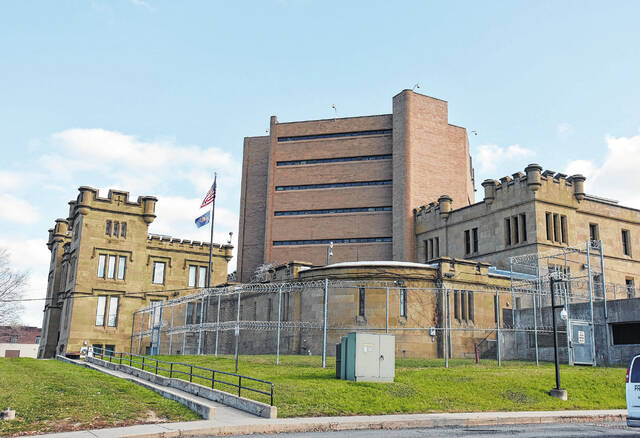Luzerne County’s prison system remains the top departmental expense in the proposed 2026 budget, as it has been for many years.
Spending for the county’s Correctional Services Division is budgeted at a proposed $33 million next year, which is a $1.5 million increase from this year’s budget.
This covers costs to staff and house inmates at both the prison on Water Street and nearby minimal offenders building on Reichard Street in Wilkes-Barre.
“We have strived over the last few years to keep the budget in line,” said county Correctional Services Division Head James Wilbur, who is set to formally present his budget to County Council at its Tuesday meeting.
”The majority of the budget, when you break it down, is for salaries and benefits and the medical care which we are required to provide to inmates,” Wilbur said.
Correctional Services is budgeted for 274 union and 20 non-union workers, although Wilbur said the union count is typically around 265 due to vacancies.
When all personnel costs are added up — wages, payroll taxes, and benefits — the total is $24.8 million in the proposed budget — an increase of $1.1 million that makes up the lion’s share of the additional request for 2026.
Council unanimously approved a new five-year collective bargaining agreement with prison workers in March that provides 3% raises annually.
Wilbur said compensation was addressed because recruiting and retaining quality candidates is a challenge.
Correctional Services inherently has higher costs, compared to most county departments, because both buildings must be fully staffed and operating 24/7, Wilbur said.
“We don’t close,” he said.
Correctional officers also must transport and oversee inmates receiving treatment at hospitals, Wilbur said.
Multiple officers must transport and guard each inmate requiring hospital medical treatment the entire time they are outside the prison, Wilbur has said. Inmates must receive outside treatment for “severe acuity” when the facility is unable to provide the required medical care, he said.
Wilbur spoke about this issue last year, saying the number of inmates requiring outside medical care has increased — a trend he has largely attributed to medical problems tied to substance use disorder and more older inmates charged and sentenced.
Medical services for prison inmates are primarily provided through Wellpath LLC. The county switched to an outside provider a decade ago because the administration determined partial outsourcing would be more cost-efficient.
The proposed correctional budget includes $4.6 million for this service next year, or $351,133 more.
Wellpath must supply a range of medical and mental health services and personnel, including prescription and nonprescription drugs and emergency ambulance transport.
The budgeted amount does not include additional Wellpath costs for the medication-assisted treatment program for inmates with substance use disorder because that program is funded by the state’s settlement against opioid manufacturers and wholesale distributors, Wilbur said.
Feeding inmates
A total $1.1 million is budgeted for kitchen and grocery expenses next year, an increase of $50,000.
The county had switched to an outside contract with Florida-based Trinity Services Group Inc. in 2023 to reduce expenses.
Trinity provides food at a per-meal cost and oversees the prison kitchen.
Council unanimously voted in November 2024 to renew Trinity’s contract for three more years after the company submitted the lowest qualifying bid in a fresh public procurement search.
The county inmate population fluctuates with a constant stream of releases and new bookings, but Wilbur said the average is 550.
Correctional Services revenue is budgeted at $1.2 million next year, or $117,400 less.
“The prison doesn’t have a lot of ability to generate revenue,” he said.
County officials have periodically discussed the possibility of a new county prison for more than two decades because the existing aging, multistory facility on Water Street in Wilkes-Barre requires significant maintenance and has an inefficient layout that increases minimum manning requirements. The facility was built in 1887 and renovated in 1987.
But each time the topic of a new prison comes up, the subject ultimately remains on the back burner primarily due to the cost. County officials have estimated the expense would be hundreds of millions of dollars depending on the design and location.
Tuesday’s budget presentations are at the end of a work session that follows council’s 6 p.m. voting meeting in the county courthouse on River Street in Wilkes-Barre.
Instructions for the remote meeting attendance option will be posted under council’s online meeting section at luzernecounty.org.
The proposed $171 million general fund operating budget recommends a 1.9% real estate tax increase, which equates to $12 more per year on a residence assessed at the median $95,500, the administration has said.
Council is free to make changes before the Dec. 15 budget adoption deadline, and several council members already have proposed various amendments.
Reach Jennifer Learn-Andes at 570-991-6388 or on Twitter @TLJenLearnAndes.





